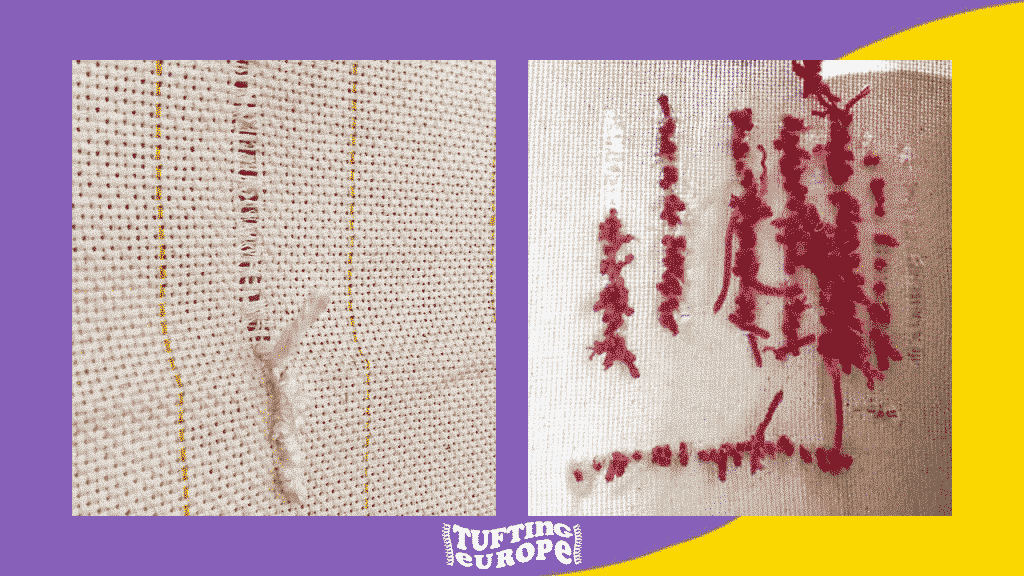Is your backing cloth tearing? This happens to a lot of tufters that start out and could have several reasons. We have summed up all tips to prevent tearing.
Speed
It is best for beginners to start out on a slower mode. The faster you set it, the faster you have to move around the canvas. You can also move in intervals, by letting go of the trigger frequently. If you keep your tufting gun active on one spot it could tear.
Pressure
The little metal feet in front of your tufting gun need to be pressed firmly against the backing cloth. Don’t be afraid to give it a bit of pressure, and try to keep the pressure evenly. When you are done tufting a line, let go of the trigger and make sure the gun has stopped before pulling it out of your backing cloth.
Direction of motion
A tufting gun can only move in one direction, up. Moving your tufting gun on your backing cloth takes some practice. It is best to start with vertical and horizontal lines, and only do curved lines for designs that need it, like eyes and other circles.
Backing Cloth Tension
Make sure your fabric is wrapped super tight around your frame. You should be able to bounce a coin off of it. If you have been tufting for a while and tension is lost due to pressure, re-tighten your backing cloth to the frame. When stretching make sure the lines on your backing cloth are even so your design is unaffected.
Yarn Feeding
It is very important that your yarn can move freely. If your yarn is coming from below or gets stuck on the machine, it will create tension, which in turn will give these kinds of issues.
Pulling the yarn from the bottom might not be the best idea. Create a loop for the yarn to feed from the top of your frame and make sure that there is no tension on the yarn. It must flow with no tension to it.
Yarn amount
We recommend to feed your tufting gun at least two strings of yarn instead of one. Double threading the yarn or even feeding three or four strings will give better results. More yarn means a more fluffy look, typically two strings are used, but feel free to experiment!











